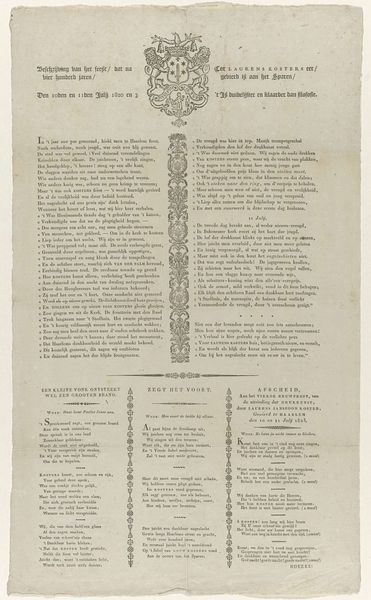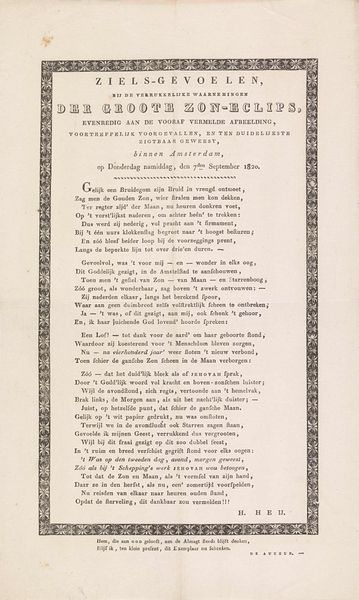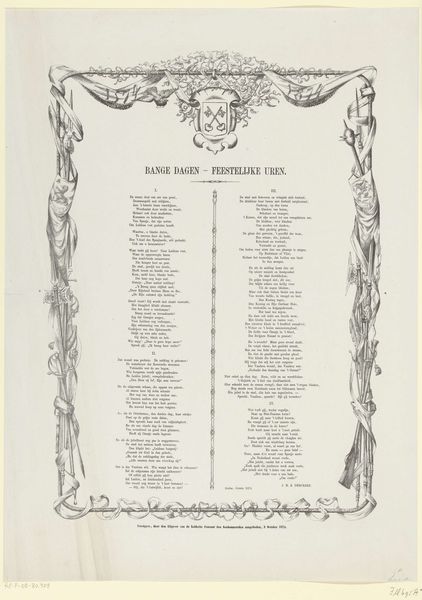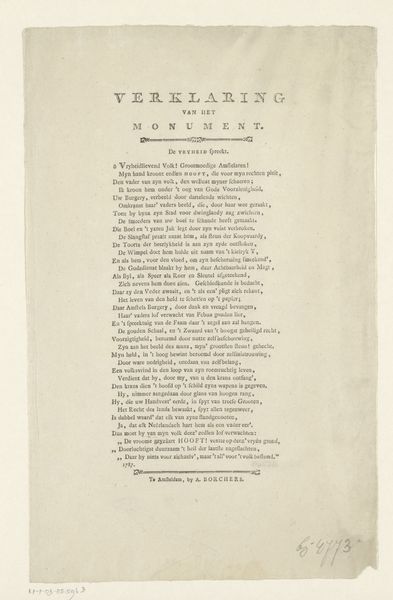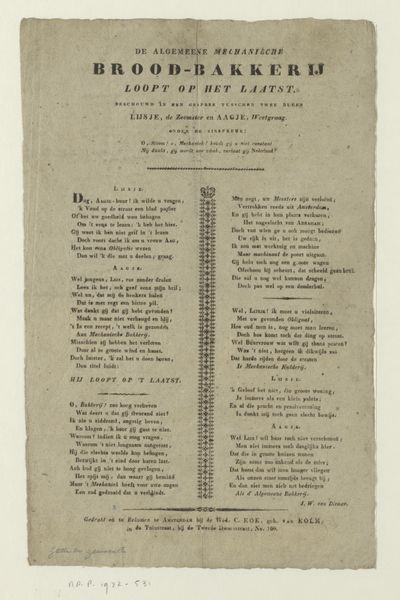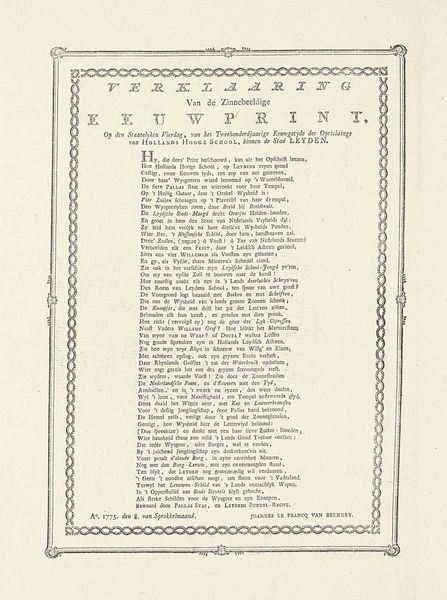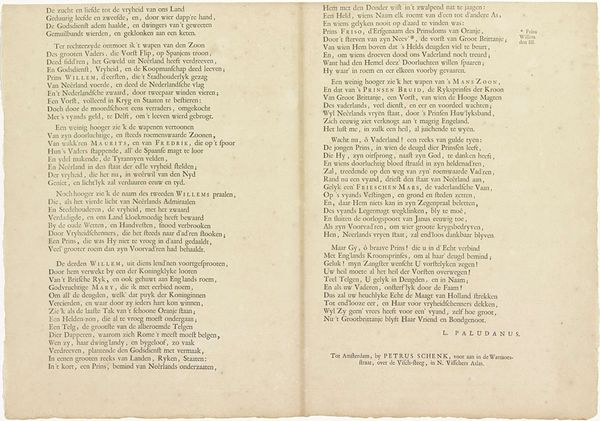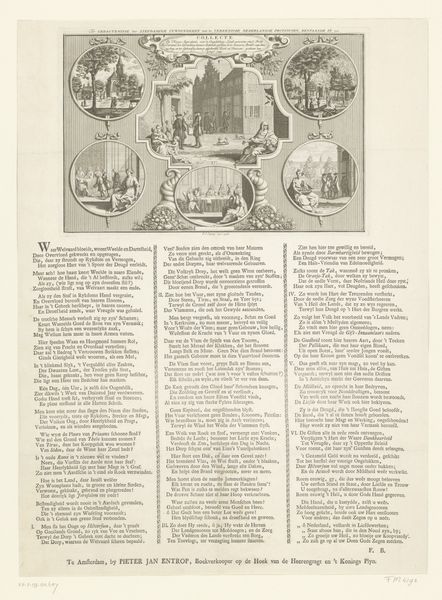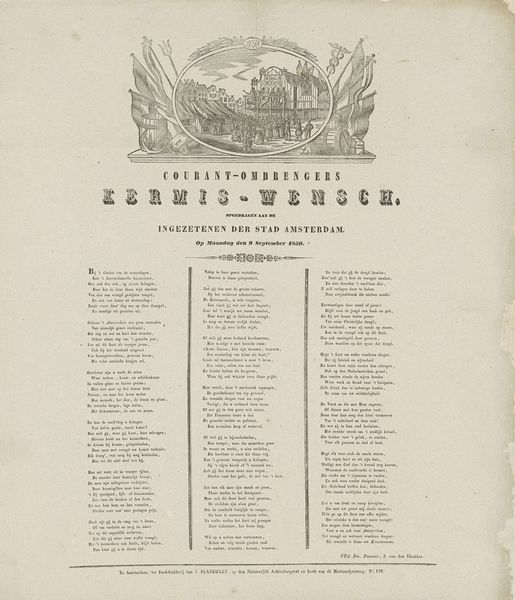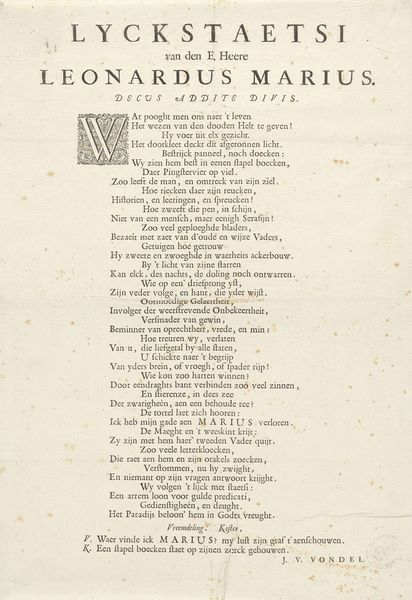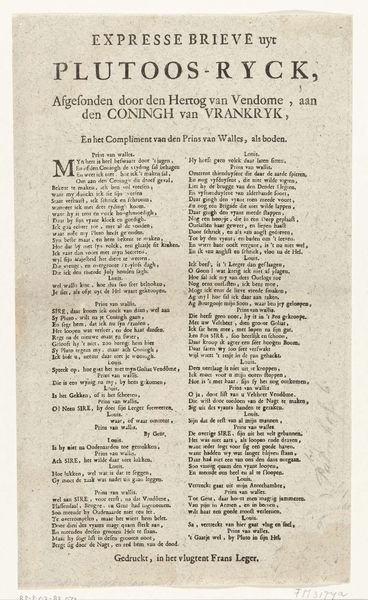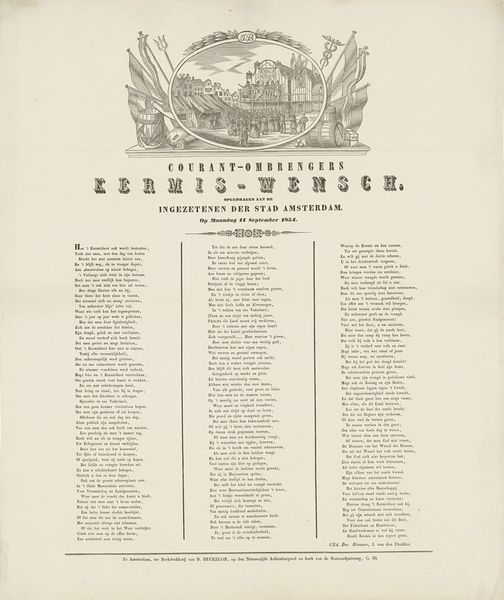
Vers bij een schietoefening van het Utrechts Exercitiegeootschap Pro Patria et Libertate, 1784 1784
0:00
0:00
print, etching, textile, paper
# print
#
etching
#
textile
#
paper
#
history-painting
#
calligraphy
Dimensions: height 430 mm, width 260 mm
Copyright: Rijks Museum: Open Domain
Curator: This intricate print, dating from 1784, presents a "Speech Upon Receiving the Palm, Olive Branch, and Laurel Wreath by the Patriotic Society of Utrecht, for their excellent Target-shooting." The work, etched by Z. Brakel, strikes me as a fascinating blend of artistry and political expression. Editor: My initial reaction is one of restrained elegance. The monochromatic palette, delicate line work, and overall symmetry lend it a formal, almost austere character, despite the celebratory context. Curator: Precisely. Consider how the text is framed by these meticulously rendered laurel wreaths. Laurel, palm, and olive are potent symbols of victory, peace, and prosperity, respectively. Encircling the patriotic poem, they visually amplify the Society's virtuous actions. Editor: And the banner at the top, proclaiming "Pro Patria et Libertate" -- For Fatherland and Liberty. The political climate of the time must have been intense. This imagery speaks to the power of organized civil society and their advocacy through what appears to be performance. Curator: Yes, during that period, the Patriot movement was gaining momentum, advocating for greater citizen participation in governance against the ruling Stadtholder. Target-shooting societies became subtly charged displays of civic duty and readiness to defend those ideals. Editor: It makes one wonder about the reach of such prints. Who was the intended audience? The text suggests it was commissioned by and for the Society of Utrecht, however how far did they envision or intend distribution of these printed keepsakes to occur? Curator: It’s interesting to speculate; I believe these would likely be distributed among members and supporters, a tactile reminder of their shared ideals, achievements, and an artifact through which to maintain visibility to patrons. The act of physically holding and viewing the etching solidified the symbolic meaning. Editor: So, in essence, it's a form of propaganda, albeit a refined and artistic one, designed to galvanize support and cement shared identity? How interesting that our print endures as evidence of such intention. Curator: Exactly. By blending textual rhetoric with these instantly recognizable symbols, Brakel created a work steeped in cultural meaning that, like you stated, serves as a vivid reminder of a specific historical moment. Editor: This has definitely deepened my understanding. What initially appeared to me as a delicate aesthetic piece contains a more powerful declaration than one would imagine.
Comments
No comments
Be the first to comment and join the conversation on the ultimate creative platform.
